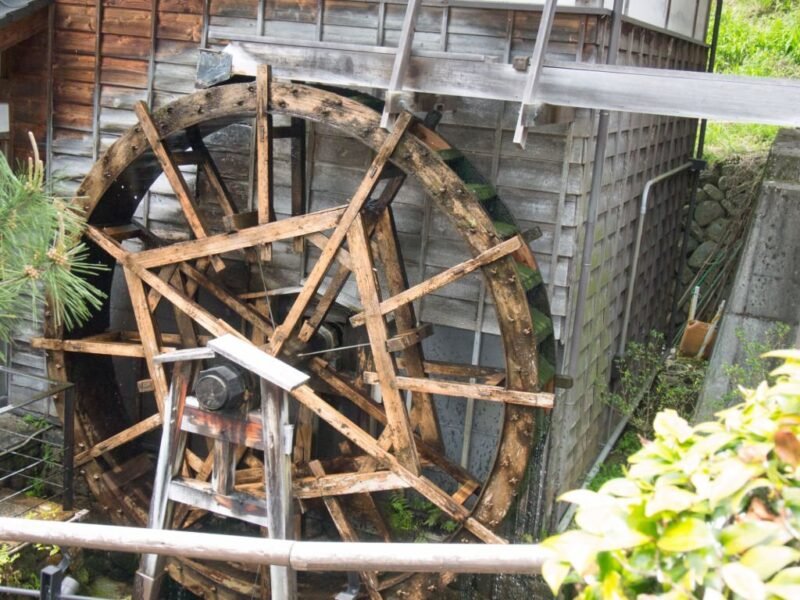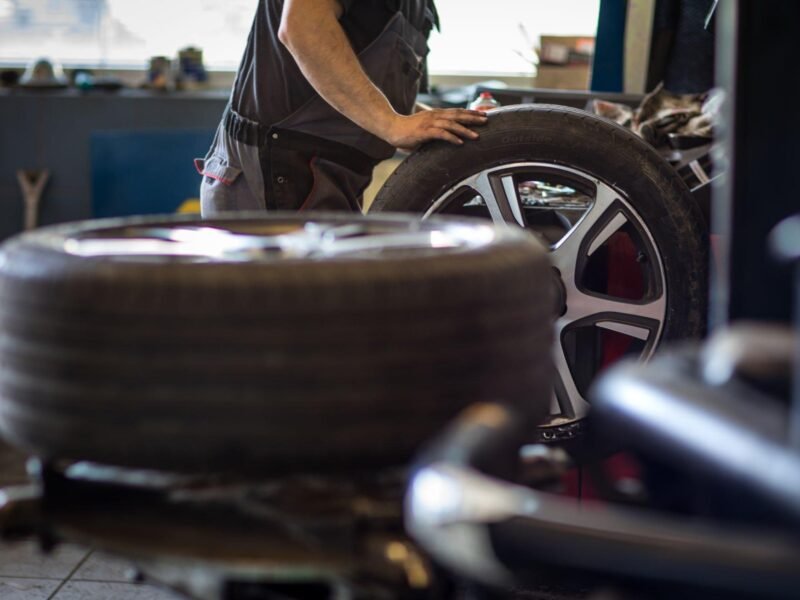Have you ever wondered what is the difference between a crossover and an suv (also known as a CUV) different from one another? It’s not an absurd query. In fact, it’s getting more difficult to categorize vehicles into distinct “types” as segments get larger and vehicle designs evolve.
The fact that a lot of automakers use the two phrases synonymously doesn’t help either. An SUV, often called a “body on frame” design, is constructed using the same chassis as a truck. That simply indicates that the frame and body are constructed independently and then joined.
Since the body and frame of a crossover are constructed as one unit, it is modeled after a car.
Question: What Is The Difference Between A Crossover And An SUV?
“The difference between a crossover and an SUV lies in their underlying architecture and intended usage. Crossovers typically share a platform with sedans, offering a unibody construction for a smoother ride and better fuel efficiency. On the other hand, SUVs often feature a body-on-frame design, providing enhanced off-road capabilities and towing capacities. This fundamental structural dissimilarity influences factors such as handling, space utilization, and overall performance, ultimately catering to distinct consumer preferences and needs. Understanding these distinctions empowers car buyers to make informed decisions based on their lifestyle, driving preferences, and intended usage.”
In the ever-evolving world of automobiles, the difference between crossovers and SUVs can be elusive. As car enthusiasts navigate the market, understanding these two categories becomes paramount.
Let me share about nuanced differences between Crossovers and SUVs, reshaping the way we perceive and choose our vehicles.
What is an SUV?
A sport utility vehicle, or SUV for short, is a car designed to perform many tasks in various settings. An SUV can handle various terrains like an ATV (all-terrain vehicle), haul and tow loads like a pickup truck, and move quickly and nimbly like a car.
An SUV can manage tough terrains while being more spacious and pleasant than a crossover because it is often much bigger, bulkier, more powerful, and more comfy. The physical structure, however, is what distinguishes the differences.
A “body-on-frame” architecture is used in the construction of SUVs, meaning that the chassis, which supports the body and engine, is built of metal.
A body-on-frame construction also enables a more robust design with superior hauling and towing capabilities. Additionally, it permits cars to have more ground clearance.
Because of this, SUVs that stay true to their heritage—such as the Ford Bronco, Cadillac Escalade, Jeep Wrangler, Chevy Suburban, and Chevy Tahoe—remain highly desirable automobiles.
The engine Is another characteristic that sets SUVs and crossovers apart. A standard SUV has a four-wheel drive (4WD) drivetrain, which is designed to withstand intense off-roading, even if some contemporary SUVs have all-wheel drive (AWD).
What is Crossover?
A crossover is the same as a crossover SUV or small utility vehicle. A crossover, as opposed to an SUV, is constructed using a “unibody,” or unitary architecture, in which the body and the frame are one single construction as opposed to two separate ones, as in a body-on-frame.
Even with its small look, this kind of construction is lightweight and provides the best possible cabin and luggage room. Crossovers are lighter, smaller, and less off-road capable cars made more for urban use than SUVs.
The 1980 AMC Eagle is often regarded as the first modern crossover, despite the fact that they initially appeared in the 1960s.
Unibody construction quickly took over as the standard method for building all kinds of cars, including sedans and hatchbacks.
A crossover nowadays Is a passenger utility vehicle built on a car or unibody base. In short, a crossover is created by joining a car chassis with a reduced SUV body.
Compared to SUVs, they are smaller, lighter, faster, and more fuel-efficient, but they are still wider and more roomy than passenger cars. Crossovers offer the best of both worlds for a lot of people.
Crossovers can pull larger loads, drive pretty well on a racetrack, and handle driving conditions in cities, suburbs, and off-road environments.
Although front-wheel drive, rear-wheel drive, or four-wheel drive are the most common drive train configurations for crossovers, they are also frequently found.
The Ford Explorer, Toyota Highlander, Chevrolet Equinox, Honda CRV, Ford Escape, and Toyota Highlander are a few of the most well-liked crossovers in the United States.
Which one is Best ?
SUV
In the past, practically all SUVs were body-on-frame vehicles with either rear-wheel or four-wheel drive, drawing inspiration from the pickup truck concept.
A automobile with this kind of design has a larger interior than one with a conventional car. Additionally, it offers the car a more robust feel, which improves its suitability for off-roading, hauling, and towing.
Certain SUVs, such as the Ford Expedition and Nissan Armada, are still constructed in this manner.
Both of these cars have ample space for eight people and have a substantial towing capacity—9,500 pounds for the Expedition and 8,500 pounds for the Armada.
Although the body-on-frame construction gives the SUV more power, it also makes it heavier than a car, which reduces the vehicle’s fuel efficiency because SUVs generally require more fuel than regular cars.
Pros:
The enormous amount of space an SUV provides is its primary advantage. SUVs offer bigger internal space as well as greater load capacity.
Depending on the model and size, an SUV can accommodate up to eight passengers and more than 100 cubic feet of luggage. SUVs are big, heavy cars designed to survive the roughest weather and road conditions.
For increased stiffness, they are made of sturdy steel and aluminum alloys. Body-on-frame structure provides greater tolerance range and durability.
The straightforward design also makes SUV repairs easier.
One of the things influencing consumer desire for SUVs is their ability to handle rough terrain. SUVs’ 44 drivetrains enable them to maneuver through muddy, snowy, or sandy conditions.
Higher ground clearance and steeper gradients are easier to navigate with powerful engines.
Cons:
Crossovers are considerably smaller than SUVs. A typical SUV can be 196.5 inches long and 196.5 inches wide. Because of their huge size, they are difficult to handle and much harder to park.
Large SUVs can be cumbersome in congested cities. The ideal weight range for an SUV is 3,000–6,000 pounds.
Due to their larger engines and reduced aerodynamics brought on by their size, SUVs use more fuel than crossovers.
An SUV is more expensive to buy than a standard sedan, hatchback, or crossover vehicle. This results from increased fuel consumption, larger, more expensive tires, and a greater need for oil and other fluids.
Crossover
Crossovers are more lightweight and fuel-efficient iterations of the classic SUV, commonly referred to as crossover utility vehicles, or CUVs. This is due to the fact that crossovers are constructed as single-bodies rather than bodies-on-frames.
For this reason, crossovers have superior handling and feel more like vehicles. Furthermore, even though crossovers aren’t made to tow or carry big loads, some of them can nevertheless manage to draw moderate loads.
Crossovers and SUVs have different designs, but they also have many of the same features. Owners of these vehicles have more room than in a car. Additionally raised higher, SUVs and crossovers improve driver view while driving.
Finally, AWD is typically available on SUVs and crossovers, which are better adapted to challenging terrain.
Pros:
There is a lot of space in the cabin and for luggage thanks to crossovers. Even the smallest subcompact crossovers are ideal for a family of four. Full-size crossovers, such as the Audi Q7 and Honda Pilot, have room for up to seven passengers.
Because the second and third rows of seats may be folded, crossovers offer a significant amount of freight capacity.
In terms of fuel efficiency, crossovers outperform SUVs. This is as a result of the car’s reduced overall weight and more aerodynamic body. Fuel-efficient hybrid drive trains are available on a large number of crossovers.
Cons:
Although crossovers are ideal for minor off-roading and trailing, they are neither strong enough or flexible enough to handle high loads or challenging off-road conditions.
A crossover’s decreased ground clearance, low power, and lack of traction generally limit its potential. In a collision, the uni-body platform absorbs the most force. The expense of accident repair will go up as a result.
Which Vehicle is Right For You?
Everything is based on your needs. Purchasing a crossover is generally a smart choice if money is tight. In general, crossovers are less expensive in terms of price and fuel.
If space is a top need for you, though, you might want to consider purchasing an SUV.
If you need to tow something frequently, an SUV is also a great option. SUVs typically feature larger towing capacities, more power, and larger engines.
Additionally, they typically perform better in off-roading scenarios.
You Should Buy an SUV If.
- You must transport bulky machinery.
- Do off-roading of any kind.
- Need to pull something, such a fifth wheel or camper
- You reside in a place where a high ground clearance is necessary.
- You give prominence to visibility.
You Should Buy a Crossover If.
- You drive on highways a lot.
- Possess a family or require space for multiple travelers
- Usually, you don’t tow anything since you need the room but don’t want it to feel heavy.
- You are searching for something somewhat efficient and prioritize fuel efficiency.
Conclusion
The conclusion of the question “ what is the difference between an SUV and crossover?” is that, The frame that an SUV or crossover is built upon is the primary distinction between them. You have an SUV if the frame is built on a truck’s basis.
It is a crossover, though, if the frame is built on an automobile basis. The decision between an SUV and a crossover will depend on the driver’s tastes and the locale.
If you live in a remote region and need to transport a large amount of material, an SUV is your best bet.
However, the car is more expensive to maintain and uses less fuel due to its size and weight.
A modest family living in the city should consider a crossover. Its lightweight design makes driving more comfortable and economical with gas. Unfortunately, their bodies are so light that they lack the strength and flexibility needed to handle big loads and challenging off-road conditions.












